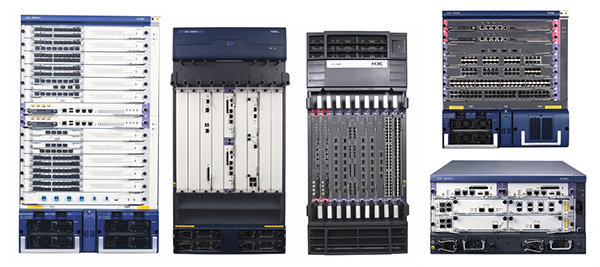Life without Cisco
 Last week, HP released a press release, where, in a calm and restrained manner, very significant news was reported in everyday tone. At first glance, nothing special happened: the company's PR service reported that HP had equipped six of its data centers with its own network equipment. But in reality, this means that in the critical data center nodes, which serve 300 thousand employees in 170 countries of the world, HP could do without Cisco equipment.
Last week, HP released a press release, where, in a calm and restrained manner, very significant news was reported in everyday tone. At first glance, nothing special happened: the company's PR service reported that HP had equipped six of its data centers with its own network equipment. But in reality, this means that in the critical data center nodes, which serve 300 thousand employees in 170 countries of the world, HP could do without Cisco equipment.Cisco backbone switches in recent years serve as an informal benchmark in the world of telecommunications. Infrastructures of entire industries are “tied” to them, and whole generations of administrators have built their careers on the knowledge of equipment and protocols only of this vendor. Juniper and Extreme Networks have been trying to change this situation for a long time. It would seem that HP did not participate in this technological race. But today, HP Networking has brought its products to the degree of development when it became possible to assign the most ambitious tasks to them.
“After exchanging views with customers from around the world, we came to the conclusion that they needed a supplier of a complete set of network products with an open architecture that could create an alternative to non-standard protocols to which users have been tied for decades,” said HP's IT director Randy mott And HP decided to set an example here.
HP Series A switches came to replace hardware vendors in 6 data centers in Houston, Austin and Atlanta. The migration took place in working mode, none of the data centers stopped serving the users for a second. I recall that several years ago, these data centers replaced 85 data centers and hundreds of server rooms in HP's local offices around the world.
')
Together with the transition to their own equipment, engineers of HP Networking, taking advantage of the case, significantly expanded the capacity of the backbone network, raising it four times, to 260 Gbit / s. This came in very handy, given that the new data center architecture is specifically designed for transferring large amounts of data and lightning-fast transaction processing from HP.com.
The transfer of data centers to new rails is only the first step in a serious re-organization of the company's common network. Equipment at the borders of the HP global network will also be gradually replaced. Replacing equipment from Cisco and other vendors in the “heart” of its backbone network, HP unambiguously stated that it could do the same for its customers, providing them with a full range of networking products, from basic to mainstream. Obviously, the integration of the recently acquired 3Com company into the structure of HP units was successful and very timely.

Specific models installed in the company's data centers as part of the reorganization: 20 A8812 routers, 6 A6616 routers, 18 A6604 routers, 16 A12508 switches and 12 A9505 modular switches.
Source: https://habr.com/ru/post/106937/
All Articles